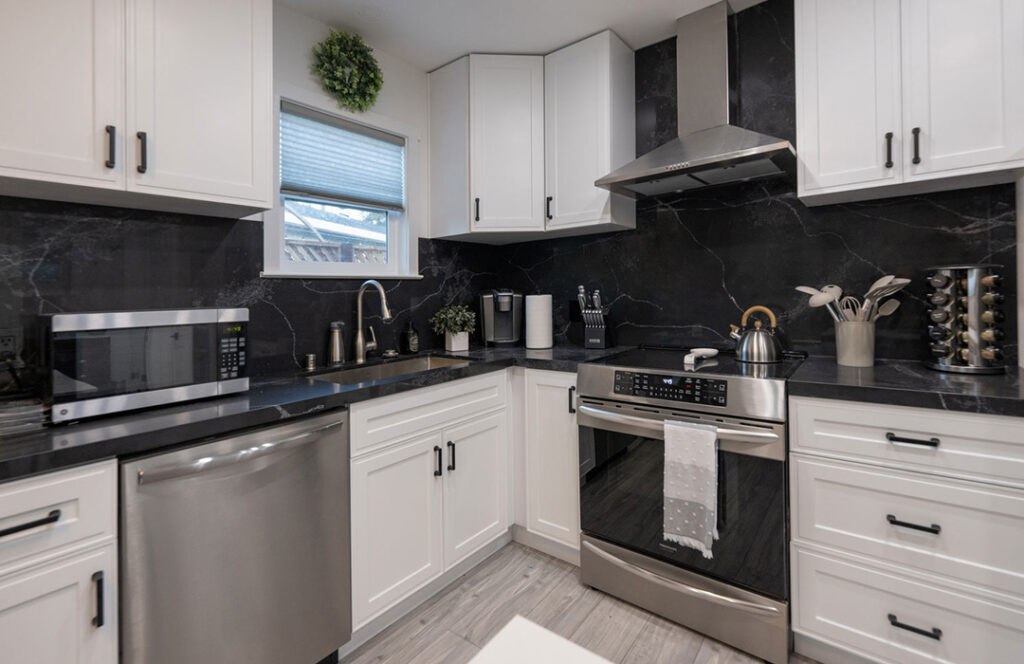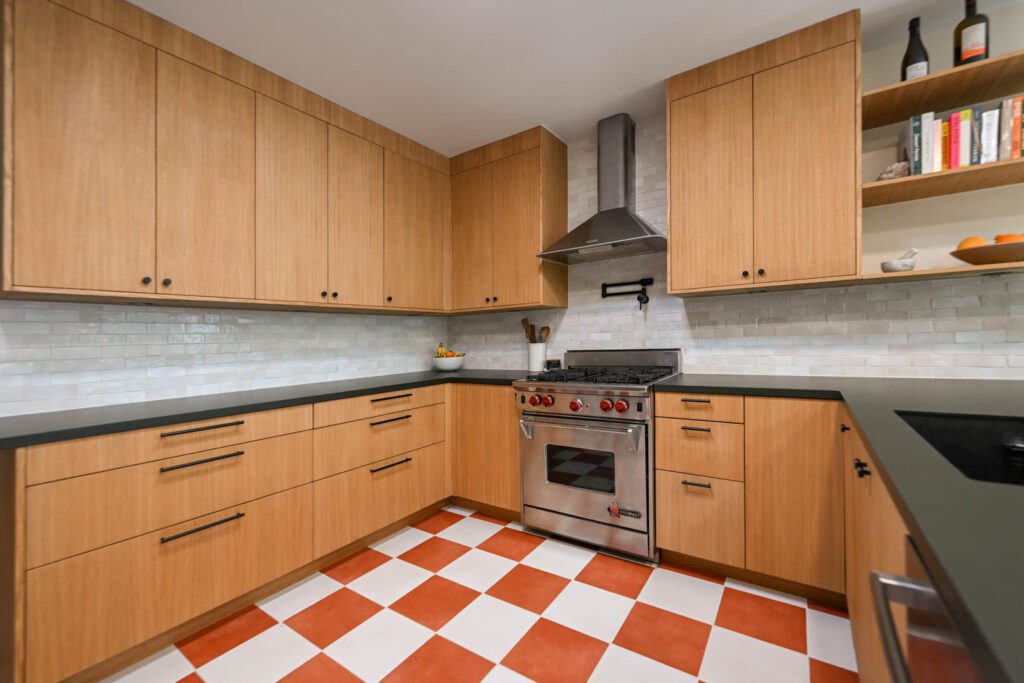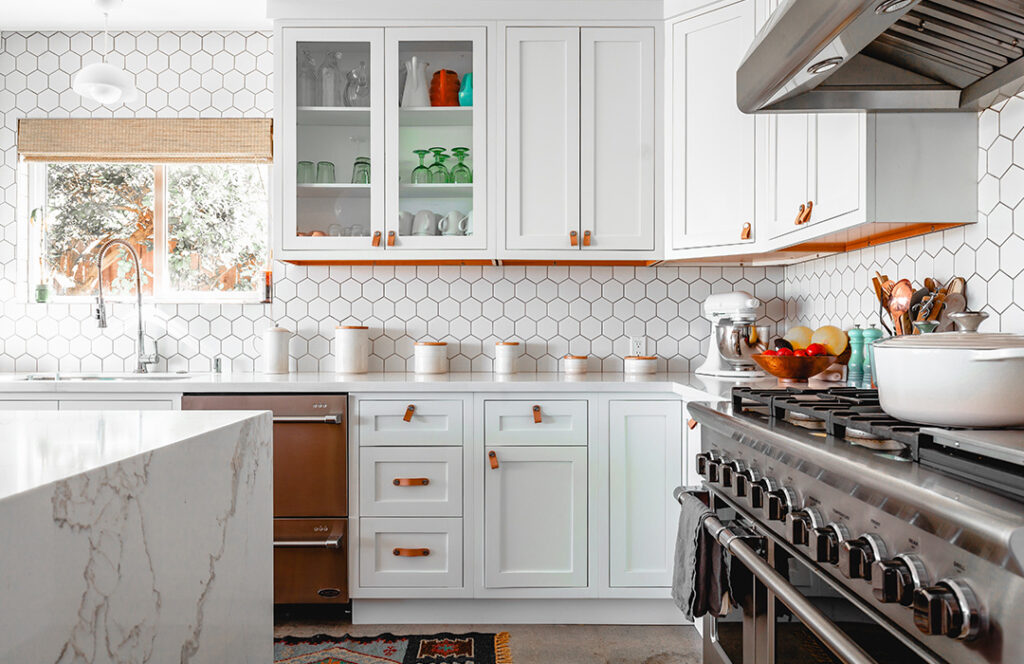Avoiding common mistakes can save you time, money, and frustration. Understanding the pitfalls in the selection process is crucial for achieving a successful outcome. By sidestepping these errors, you can ensure that your kitchen renovation or upgrade goes smoothly and meets your expectations. Stay tuned as we delve into five key mistakes to steer clear of when choosing kitchen cabinets.
Identifying Common Mistakes in Kitchen Cabinet Selection
Not Considering Overall Design
When selecting kitchen cabinets, it’s crucial to think about the overall design of your kitchen. If you overlook this aspect, the cabinets may clash with the aesthetic or layout. For example, choosing sleek modern cabinets for a farmhouse-style kitchen can create a jarring visual contrast.
To avoid this mistake, ensure that your cabinet choice complements the existing design elements in your kitchen. Consider factors like color schemes, hardware styles, and overall theme coherence when making your selection.
Overlooking Functionality and Storage Needs
One common error during cabinet selection is overlooking functionality and storage requirements. Cabinets are not just about looks; they should also serve a practical purpose by providing ample storage space for all your kitchen essentials. Ignoring this aspect might result in insufficient storage or inefficient use of available space.
To prevent this mistake, assess your storage needs before choosing cabinets. Think about what items you need to store – from pots and pans to small appliances – and select cabinets that offer suitable configurations such as pull-out shelves or deep drawers.
Failing to Research Cabinet Materials
Another misstep many homeowners make is failing to research different cabinet materials for durability and quality. Some materials may look great but lack longevity or require high maintenance. Without proper research on cabinet materials like wood types or finishes, you might end up with cabinets that don’t withstand daily wear and tear well.
To steer clear of this error, take time to explore various cabinet material options available in the market. Compare their pros and cons regarding durability, maintenance requirements, and how well they fit into your lifestyle before making a final decision.
1.Avoiding Incorrect Dimensions for Kitchen Cabinets
Taking Accurate Measurements
When selecting kitchen cabinets, ensuring accurate measurements is crucial to avoid ill-fitting cabinets. Measure the height, width, and depth of the space multiple times to prevent errors. Use a tape measure and record precise measurements to ensure the cabinets fit perfectly.
Remember that precision is key when measuring for kitchen cabinets. Double-check all measurements before finalizing any decisions to guarantee that the new cabinets will seamlessly integrate into your kitchen layout.
Considering Appliances and Fixtures
It’s essential not only to measure the space but also consider appliances and plumbing fixtures in your dimensions. Neglecting these elements can lead to issues such as obstructed drawers or doors unable to open fully due to nearby appliances.
Take into account the dimensions of appliances like refrigerators, dishwashers, or stoves when planning where your new cabinets will be installed. This consideration ensures that everything fits harmoniously within your kitchen space without any obstructions.
Allowing Clearance Space
Don’t forget about clearance space when determining cabinet measurements. Consider leaving enough room for doors and drawers to open smoothly without hitting adjacent walls or countertops. Make sure there is ample walkway space around the cabinetry for ease of movement in the kitchen.
Including adequate clearance in your cabinet design prevents functionality issues down the line by allowing easy access to storage areas while maintaining a seamless flow within your kitchen layout.
2.Proper Positioning of Cabinet Doors and Drawers
Importance of Proper Alignment
Improper alignment of cabinet doors and drawers can lead to functional issues. When these elements are not correctly positioned, they may not close properly or could get stuck. Imagine trying to open a drawer only for it to jam halfway due to misalignment.
Choosing the right hinges and slides is crucial for smooth opening and closing. The wrong type can cause doors to swing too far or drawers to stick when pulled out. Selecting the appropriate parts ensures that your cabinets operate seamlessly, enhancing their usability.
Significance of Handles or Knobs Placement
Handles or knobs might seem like minor details, but their placement plays a significant role in accessibility. Placing them too high or too low on cabinet doors can make it challenging for people of different heights to reach comfortably. Consider how frustrating it would be if you had difficulty opening your cabinets because the handles were installed at an awkward height.
- Improper alignment affects functionality
- Choosing correct hinges and slides is essential
- Handles/knobs placement impacts accessibility
3.Selecting the Right Handles and Knobs for Kitchen Cabinets
Matching Style
When choosing handles or knobs for your kitchen cabinets, it’s crucial to ensure they complement the overall style of your kitchen. Mismatched handles can disrupt the aesthetic flow of the space. For instance, if you have a modern kitchen with sleek finishes, opting for rustic or ornate knobs might clash with the design.
Selecting handles that align with your kitchen’s theme enhances visual harmony. For a farmhouse-style kitchen, consider choosing simple and traditional handles to maintain consistency in design. Always keep in mind how these small details contribute to the overall look and feel of your space.
Ergonomic Considerations
Ergonomics play a vital role in selecting cabinet handles and knobs as they impact daily functionality. Neglecting ergonomic factors can lead to discomfort and inconvenience when using your cabinets regularly. Ergonomically designed handles ensure ease of use by providing comfortable grips that reduce strain on hands and fingers.
Opt for handles with rounded edges that are easy to grip without causing discomfort during repetitive motions like opening and closing cabinet doors. Consider the size of the handle or knob; oversized options may be challenging to grasp comfortably over time.
Durability Matters
Overlooking durability when choosing materials for cabinet hardware can result in premature wear and tear, leading to frequent replacements or repairs. Select high-quality materials such as stainless steel, brass, or zinc alloy that offer longevity and resilience against daily wear.
Durable materials not only prolong the lifespan of your cabinet hardware but also maintain their appearance despite constant use. Investing in quality knobs ensures they withstand regular handling without losing their finish or structural integrity over time.
4.Choosing Between Frameless and Framed Cabinet Doors
Understanding Differences
Frameless cabinet doors, also known as European-style cabinets, lack the face frame found in traditional framed doors. Framed cabinet doors have a visible frame around the door front. The absence of a face frame in frameless doors provides a sleek, modern look.
When selecting between these two types, it’s crucial to understand their differences. Frameless cabinets offer more accessibility and storage space due to the full overlay design that covers the entire box. On the other hand, framed cabinets provide a classic aesthetic with visible hinges and frames.
Aesthetic Impact
The choice between frameless and framed cabinet doors can significantly impact your kitchen’s overall design. Consider how each style complements your kitchen decor—frameless for a minimalist, contemporary look or framed for a more traditional feel.
Your selection should align with your desired kitchen ambiance and style preferences. For instance, if you aim for a seamless appearance with clean lines, opting for frameless cabinets might be ideal. Conversely, if you prefer a more conventional or detailed look with visible hinges and frames, framed cabinets could suit your taste better.
Structural Differences
Apart from aesthetics, understanding structural variances is essential when choosing between frameless and framed cabinet doors. Frameless cabinets typically offer easier access to items inside due to their full-overlay design compared to partial-overlay designs commonly seen in framed cabinetry. Consider how installation requirements differ based on whether you choose frameless or framed options; this can affect both ease of installation as well as long-term durability.
5.Avoiding Clashing Colors in Kitchen Cabinet Selection
Consider Other Elements in the Kitchen
When choosing colors for your kitchen cabinets, it’s essential to consider other elements in the space. Clashing colors can create a chaotic and unappealing look. For example, if your countertops or backsplash feature bold patterns or vibrant hues, opting for neutral cabinet colors can help maintain balance.
To ensure harmony, you should also take into account the flooring color and material. If you have dark floors, selecting light-colored cabinets can prevent an overwhelming feeling of darkness in the room. Similarly, if your kitchen has plenty of natural light coming in through windows, choosing darker cabinet shades might complement the brightness well.
Understand Lighting Impact
Another common mistake is neglecting how lighting affects cabinet colors. Natural and artificial lighting can significantly alter how a color appears on your cabinets. Consider whether your kitchen receives ample natural light throughout the day or relies more on artificial lighting sources.
For instance, warm-toned lighting may make cool-colored cabinets appear dull or off-putting. Conversely, cool-toned lighting can sometimes wash out warm-colored cabinets. To avoid this issue, test paint samples under different types of lighting conditions before making a final decision on cabinet colors.
Pro: Achieving a cohesive look by considering all elements.
Con: Clashing colors may lead to visual clutter.
Key Information: Lighting plays a crucial role in color perception.
Examples: Dark floors pair well with light cabinets; Warm-toned lights affect cool-colored cabinets differently.
Optimizing Storage Space in Kitchen Cabinets
Underestimating Storage Needs
When selecting kitchen cabinets, it’s crucial to maximize the available kitchen space efficiently. Many people make the mistake of underestimating their storage needs and end up with insufficient cabinet space. To avoid this, assess your current storage requirements by considering all your kitchen essentials like pots, pans, dishes, and appliances.
Pros:
- Efficient use of available space
- Avoid cluttered countertops
Con:
- Limited flexibility for future storage needs
Neglecting Specialized Storage Solutions
One common oversight during the cabinet selection process is neglecting specialized storage solutions such as pull-out shelves or dividers. These features can significantly enhance the functionality of your cabinets by providing designated spaces for specific items like spices, cutting boards, or cleaning supplies.
- Consider installing pull-out shelves to easily access items at the back of deep cabinets.
- Utilize drawer dividers to keep utensils organized and prevent clutter.
- Incorporate vertical tray dividers to store baking sheets and trays neatly.
Importance of Organizing Before Installation
Before installing new kitchen cabinets, it’s essential to organize and declutter your existing kitchen items. Failure to do so may result in wasted cabinet space due to unnecessary items taking up valuable room inside the cabinets.
Key Information:
- Decluttering before installation ensures that only essential items are stored.
Prioritizing Durability When Choosing Kitchen Cabinets
Importance of Durability
When selecting kitchen cabinets, prioritizing durability is crucial to ensure they can withstand the demands of daily use. Not considering this aspect may lead to premature wear and tear, affecting the overall functionality and aesthetics of your kitchen. Materials that can endure moisture, heat, spills, and constant opening and closing are essential for long-lasting cabinets.
Quality construction plays a significant role in ensuring the longevity of kitchen cabinets. Choosing sturdy materials like hardwoods or high-quality plywood is vital to prevent warping or damage over time. Neglecting this factor might result in having to replace cabinets sooner than expected due to structural issues caused by subpar craftsmanship.
Materials Selection
Opting for materials known for their durability such as solid wood or stainless steel can help avoid common pitfalls. Considering factors like water resistance, scratch resistance, and ease of maintenance are key aspects in material selection.
Pros:
- Longevity ensured through durable materials.
- Resistance against wear and tear from daily use.
Cons:
- Higher initial cost compared to less durable options.
- Limited aesthetic choices with some highly durable materials.
Craftsmanship Matters
The quality of construction directly impacts how well kitchen cabinets hold up over time. Overlooking craftsmanship may result in issues like loose hinges, misaligned doors, or weak joints that compromise the cabinet’s integrity. Investing in well-crafted cabinets ensures they remain functional and visually appealing for years to come.
Considering these aspects during the selection process will help you avoid common mistakes that can lead to dissatisfaction with your kitchen cabinets down the line.
Matching the Style of the Room with Your Chosen Cabinets
Consistency in Design
When selecting kitchen cabinets, it’s crucial to ensure they align with the overall style and theme of your kitchen. Imagine a sleek, modern cabinet in a rustic farmhouse-style kitchen; it would create a jarring contrast. To avoid this mistake, consider the design elements already present in your kitchen. If you have traditional décor, opt for classic wooden cabinets that complement the existing aesthetic.
To maintain consistency in design, think about how your chosen cabinets will blend with architectural elements like exposed beams or brick walls. Neglecting these features can lead to a disjointed look where your cabinets stick out instead of seamlessly integrating into the space. By harmonizing your cabinetry choice with these structural components, you can achieve a cohesive and visually appealing kitchen design.
Coordinating Finishes
Another common error is failing to coordinate cabinet finishes with other design elements in the room. For instance, if your lighting fixtures feature brushed nickel accents but your cabinet hardware is brass, it can create an unbalanced feel. To prevent this mismatched look, pay attention to details like hardware finishes and countertop materials when choosing cabinet finishes.
- Consistency: Ensure that all elements work together cohesively.
- Architectural Elements: Consider how cabinets fit within existing structures.
- Coordinating Finishes: Match cabinet finishes with other design components for a unified look.
Final Remarks
You’ve now learned the dos and don’ts of selecting kitchen cabinets. Avoid those common mistakes, get the dimensions right, position those doors and drawers like a pro, pick the perfect handles and knobs, decide between framed and frameless doors, watch out for color clashes, maximize that storage space, prioritize durability, and match your cabinet style to your room. Now go forth and choose your kitchen cabinets wisely!
Elevate Your Kitchen with Tailored Cabinet Solutions by Red White & Blue Construction!
Are you dreaming of a custom kitchen makeover in Lafayette, CA? Look no further than Red White & Blue Construction, your ultimate choice for exceptional pre-remodeling planning services! Specialized in creating the perfect backdrop for successful kitchen transformations, we customize our pre-remodeling approach to align seamlessly with your distinct vision and requirements. Celebrated for our proficiency in pre-remodeling planning, our commitment is to make your ideal kitchen a tangible reality, focusing meticulously on every detail to surpass your expectations. Our esteemed reputation across the Bay Area is a testament to our dedication to precision, quality, and the superior standards we maintain at every planning phase.
With Red White & Blue Construction, the journey to your kitchen remodel success is not just about laying the foundation; it’s about charting the course to a flawless execution. Thanks to our thorough planning, transparent pricing, and unmatched customer service, choosing us for your custom kitchen remodeling venture ensures a smooth, effective makeover. Opt for Red White & Blue Construction for all your pre-remodeling planning necessities and begin the path to your dream kitchen with confidence. Reach out to us today to initiate your project!
Disclaimer
The materials available on this website are for informational and entertainment purposes only and not to provide advice. You should obtain advice concerning any particular issue or problem from a professional. You should not act or refrain from acting based on any content included in this site without seeking legal or other professional advice. The information presented on this website may not reflect the most current building developments. No action should be taken in reliance on the information on this website. We disclaim all liability concerning actions taken or not taken based on any or all of the contents of this site to the fullest extent permitted by law.






